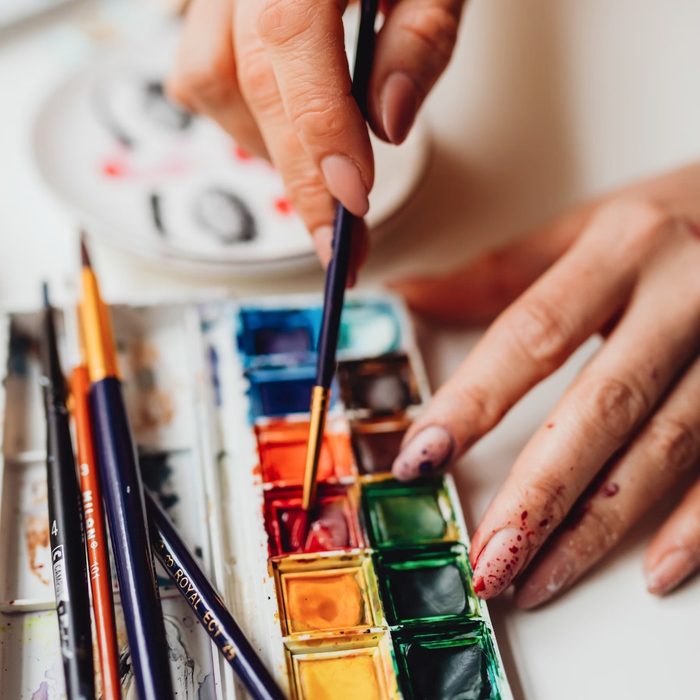Introduction To Color; Or, An Easy Path Towards A Masterful Mastery Of Mixing Colors
Thursday • August 17th 2023 • 11:37:05 pm
There are three parts, to swiftly creating a work of art.
Getting the shapes tight, is accomplished by a wall projector, or the grid method.
Selecting correct colors, by placing a pane of glass over source image, and mixing paint to match.
And styling and improving details, which requires studying one’s favorite works of art.
Getting the shapes correct is very easy, especially if ones wall projector is connected to a computer.
And the source image can be manipulated, in a photo editing program.
To for example highlight shadows and mid tones via adjusting contrast, or explore a simplified version of the colors via a posterize filter.
But color is something else, entirely, it is more mathematical than it appears.
For example, applying a vibrance filter, to a source image, will change some colors in one way, and others in another.
This is a mathematical operation, a precise filter, that will be difficult to recreate manually.
And it would likely belong to the third step, the stylization process, as a glazing technique.
Where a transparent color is applied, to a nearly complete painting.
Things – of course – get easier in time, but in the beginning, color poses a magnificent challenge.
To understand color, fast, we must leap into the world of Digital Paining.
I recommend using an open source, and free program called Krita.
But unfortunately, I must discourage you, from using a mouse.
A mouse cannot be used for digital paining, you will need a $50 digital pen and tablet.
It is very important, it makes a world of difference – do not use the mouse for painting.
Aside from being able to adjust the hue, saturation, and darkness, and having some photo processing filters to play with, I recommend g’mic
You can load your source image into the Reference Images Tool, move it over your canvas, set it to low opacity, and use the color picker.
No matter how transparent your reference image, the color picker will always sample colors from your source image, and never your canvas.
This will give your color picker, an incredible power.
Whenever you need a correct color in some spot, you hold control and tap your pen, to sample it from the original image.
There is no better introduction to color, than working trough a portrait, with the ability to quickly grab the correct color.
Here you will discover how hue and tone must vary, and how some areas of the face are rosier than others.
You may wish to assemble a simplified pallet upon a finished painting, just to see, the bare minimum colors you needed in the first place.
You will soon make discoveries that the color wheel, or months spent practicing mixing your won colors can’t provide you with.
For one aside from a broad range of skin tones, colors have themes, that go far beyond warmth of coolness.
A digital painting program, will take you on an expedition, to absolutely master color, in your own way, without any distraction.
You may choose to stay in digital world, or take your new found color intuition, if not down right superpower.
To mixing the perfect color on glass, and refining the process to master the painters pallet.
Digital painting provides you with an easy on ramp, to masterful mastery of color.
